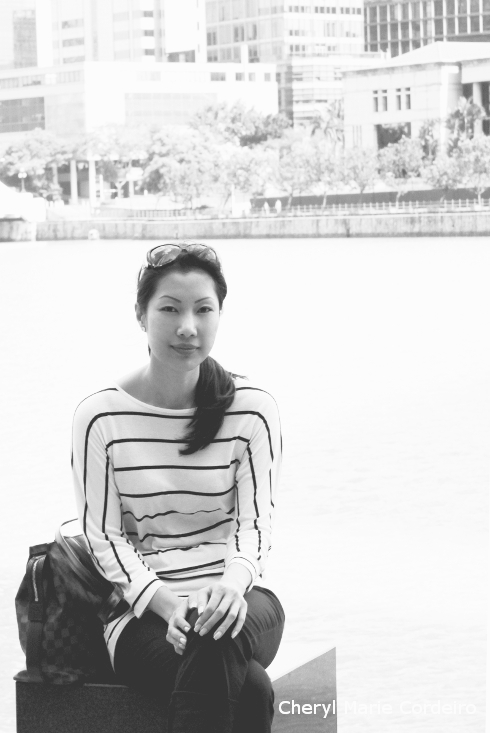The ambassadorial role of Miss Singapore title holders
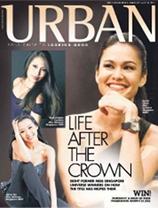 In a recent article in Urban of the Singapore Straits Times (by Joyce Chua, 18 January 2013.)I was given an opportunity to expand on my own experiences as being a Miss Universe Singapore winner.
In a recent article in Urban of the Singapore Straits Times (by Joyce Chua, 18 January 2013.)I was given an opportunity to expand on my own experiences as being a Miss Universe Singapore winner.
A recurring question I get is what goes on behind the scene after that the pageant is won, after the crowning ceremony on stage, after the stage lights have dimmed and the TV cameras shut off. Most people probably expect the answer to be, incessant and non-stop partying for a whole year. Unfortunately, or fortunately, depending on your disposition, that is not really correct. Instead, that is when the ambassadorial role of any Miss Singapore title holder begins.
The double portfolio
Till today I feel that the modern purpose of beauty pageants remain undefined. There are at least two aspects built into the structure of most beauty pageants, the entertainment front and humanitarian efforts, of which the public is more familiar with the former but see less of the latter. From this double portfolio comes numerous international opportunities and public relations efforts that begin immediately after the winner has stepped off the stage.
The ambassadorial role of Miss Singapore title holders
A few years ago I was invited to Penn State University to give a talk on my experiences of living outside of Singapore. At that time I had the pleasure of exchanging ideas with Ambassador Ashok Kumar Mirpuri, Singapore’s current Ambassador to the USA. His main point and experience from representing a comparatively small nation in the US, was reflective of my own, being that Singapore is listened to, when and because we are successful. Even as a small nation, Singapore experiences as large problems as any country. It is both vulnerable yet seemingly resilient to the processes of globalization, so to the extent that we are successful, the world is interested in what we do.
Any representative bearing “Singapore” in her title, is necessarily a reflection of our country and an investment in Singapore’s international public relations. An attractive young woman bearing the title of “Miss Singapore” will be sought after, spoken with and listened to. Whether we like it or not, whether Singapore uses it or not, she will have an ambassadorial role.
Continue reading “The ambassadorial role of Miss Singapore title holders”
Complex systems theory and the biological organization
An abstraction of Michael Conrad’s (1970) Biological Organization on Clare W. Graves’ (1980) Levels of Existence.
Text and Photo © CM Cordeiro 2013
In reading about self-organizing structures for the relevance of theory applied to the field of international business (IB), I thought the ideas expressed by Michael Conrad in his paper entitled, Statistical and Hierarchical Aspects of Biological Organization (made accessible via NASA) was interesting when also applied to the theoretical constructs of Clare W. Graves’ Levels of Existence.
Conrad discusses the differentiation and uncertainty associated with the organization and variability in a biological organization’s compartmental structures, that are expressed in terms of certain entropy measures. In his paper, he tries to ascertain the most efficient operative level of a biological system, landing on the principle of static equilibrium that he uses vector models for representation.
Continue reading “Complex systems theory and the biological organization”
Bitter orange peel gingerbread cookies
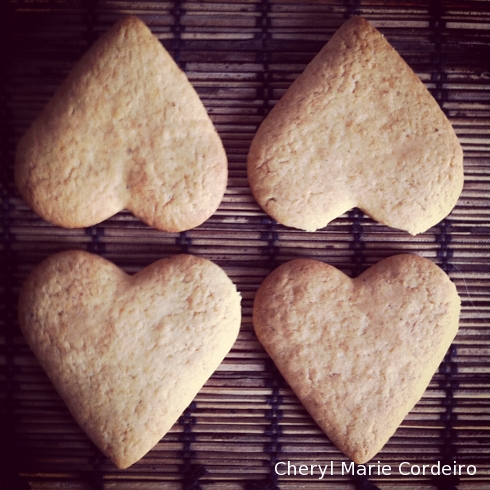
Gingerbread cookies with bitter orange peel, just because.
Text and Photo © CM Cordeiro 2013
I was over at a friend’s place recently, where in Sweden, gingerbread cookies make an abundance of appearance at coffee tables in various shapes during this time of year. Most store-bought gingerbread cookies are made with the basic ingredients of flour, sugar, syrup and spices, where they are generally a tad too sharp in sweetness for my liking, the reason why the ones served at the table on this occasion at my friend’s place intrigued.
The cookies were lighter in colour and more voluminous than the standard dark gold, thin flats of gingerbread cookies bought off the shelves at the grocery stores. And they tasted, different. I enquired after their source and her lighthearted answer was that they came from an artisan bakery shop just down the street where she lived, and no, they didn’t come off the shelf from the grocery store, her eyes just barely flinting in horror.
Lateralizing of influence between states as a means of preserving power
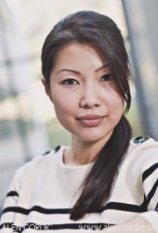 The evening’s contemplation… the opening paragraph of Joergen Oerstroem Moeller’s article, “Economic Integration: the Future for Asia” in the Diplomatist’ special issue published on the occasion of the ASEAN-India mid-December 2012 meeting in New Delhi.
The evening’s contemplation… the opening paragraph of Joergen Oerstroem Moeller’s article, “Economic Integration: the Future for Asia” in the Diplomatist’ special issue published on the occasion of the ASEAN-India mid-December 2012 meeting in New Delhi.
His article addresses what in my view is the need for a heterarchous organizational structure in state / regional governance, as a system to manage heterochronous developments within and between states. Where and how heterarchy can be effectively accomplished and operationalizable is a discussion point.
Throughout his numerous articles, Moeller’s perspective is consistent – lateralization of decision-making may on the outset seem a dissipation of power, but in reality, it could be the only way to preserve power. What is perhaps needed is a re-conceptualization of ‘power’ in the contextual understanding and recognition that the world shares one destiny.
“Over the last half century economic transactions have jumped out of the nation-state box and take place globally, while the political systems put in place to control economic activities are still mainly national and domestic. This schism between international economic transactions and national political systems exposes the impotence of policy-making and thereby undermines the legitimacy of the political system in the eyes of the citizens. This spills over into scepticism about the advantages of economic globalisation. The choice for politicians is to share decision-making with other nation-states or to lose influence, which is difficult to explain as it looks as giving away powers while in fact it is the only way to preserve power.” ~ J.O. Moeller, 2012.
Joergen Oerstroem Moeller is Senior Fellow, Singapore Ministry of Foreign Affairs, Diplomatic Academy. He was former Danish Ambassador to Singapore, Brunei Darussalam, Australia and New Zealand. He is also author to one of my favourite reads, How Asia Can Shape the World -From the Era of Plenty to the Era of Scarcities (2011, ref. video panel discussion of the book at SMU Singapore, chaired by Kishore Mahbubani).
J.A. Wheeler’s one particle, the eve of 2013
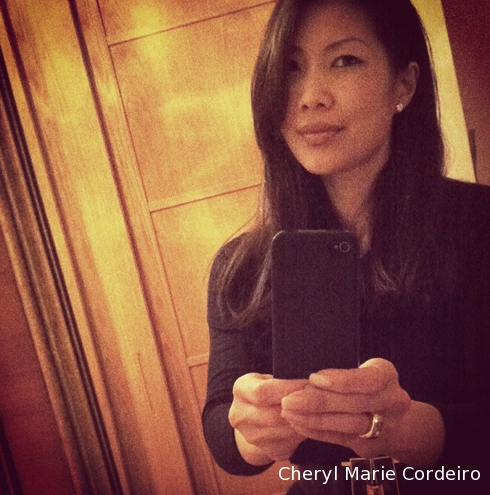
Through the looking glass.
Text and Photo © JE Nilsson and CM Cordeiro 2013
One of my favourite lectures of 2012 comes from the field of quantum physics, entitled The End of Space and Time?, delivered by Robbert Dijkgraaf on 20 March 2012 at Gresham College in the United Kingdom. Dijkgraaf was President of the Royal Netherlands Academy of Arts and Sciences (KNAW), and is currently Director and Leon Levy Professor at the Institute for Advanced Study, Princeton, New Jersey, USA.
Amongst numerous interesting theories of quantum physics presented by Dijkgraaf, it was this lecture that pointed me in the direction of the works of J. A. Wheeler, where a fascinating read for me was a chapter entitled “Law without Law” (Wheeler 1983). I thought the suggestion given by Wheeler in the mid-1900s on why electrons had identical charges and mass – due to that they were in fact a single particle that goes up in time and comes down again in a flux – was most interesting since this idea captured in essence, the non-linearity of the concept of time (see article by Alasdair Wilkins on why the single electron universe does not hold on experimental grounds).
Wheeler’s proposition focused on a radical point about particle physics, in which the directional flow of time is immaterial and in fact, completely reversible, much in my view like Gödel’s rotating universe (Barrow 2011). He also pointed out that each electron traces a unique path through spacetime, in its own world line. By use of metaphor, I could perhaps liken Wheeler’s one particle thought to how each individual traces their own world line path through spacetime, creating realities and shaping destinies as it were. It is this too that most of us would also tend to contemplate at year end via New Year’s resolutions or when faced with life’s important events / challenges, to sit down and re-evaluate, re-contextualize life vision and goals.
Continue reading “J.A. Wheeler’s one particle, the eve of 2013”
A Walden moment
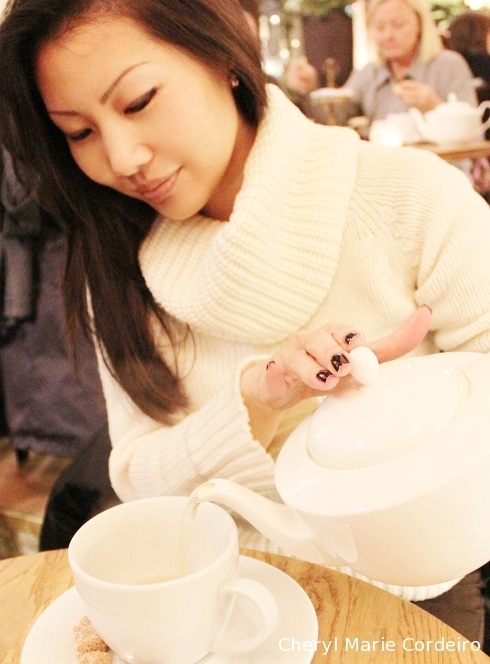
My Walden moment, of “home-cosmography”.
Text and Photo © JE Nilsson and CM Cordeiro 2012
It’s just a few days before Christmas, the Christmas weekend in fact upcoming. It is also that time of year when my mailbox gets filled with greetings alike from friends and relatives, many of whom send out a year-end summary of activities gone by as a tradition of keeping in touch – I delight in reading all narratives on how everyone is getting on in their lives no matter how large or small those changes are, from the feeling of accomplishment from a job well done at school / work to moving into that dream home of theirs and starting a family. Many updates also contain New Year’s resolutions, of goal setting for that constant strive to improve on life, on themselves, lending insight into what motivates each and every individual around us.
Yuletide in Sweden
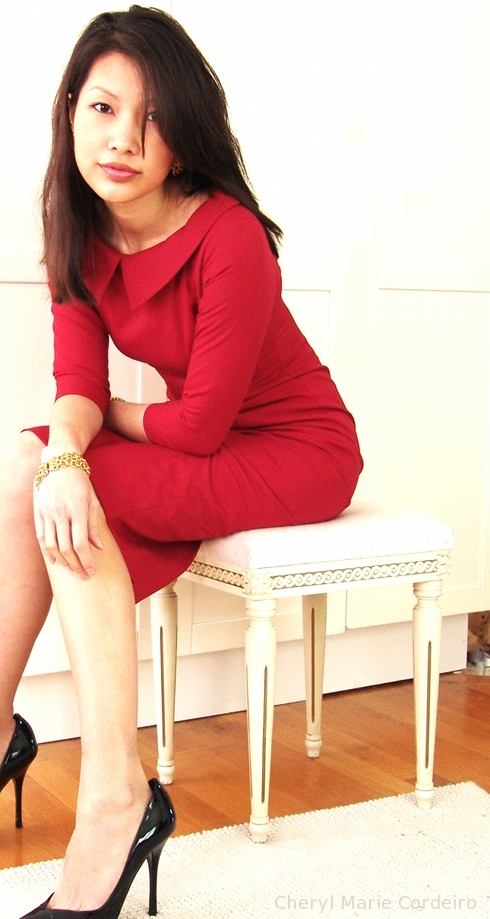
Yuletide red.
Text and Photo © JE Nilsson and CM Cordeiro 2012
Every year this time of the season, yuletide invites pour in to spend time with family and friends, so there’s every opportunity abound to get dressed in something warm, go Christmas marketing all over the city and then to dinner.
Most years at the Christmas markets, you’ll meet familiar faces, who delight in showing you their handmade wares and new decorations in festive red, tinsel silver and gold.
This year, a note of more candles than electric lamps lighting up the interiors of the market places, all creating a warm feeling that contrasts so nicely against the frosty Nordic nights. Outside on a clear moonlit market evening, the stars stand crisp against a black velvet cloak of night, dim voices that float through the air and what you hear most is the soft crunch of snow under leather soles.
Continue reading “Yuletide in Sweden”
A Christmas table at the old Swedish East India wharf, 2012
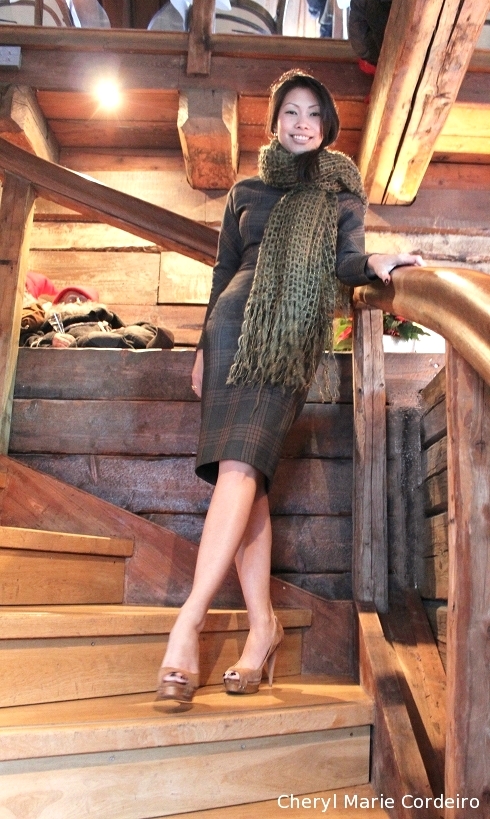
In the old Swedish East India Company wharf that is today, Sjömagasinet.
Text and Photo © JE Nilsson, D Neikter Nilsson and CM Cordeiro 2012
This spacious wooden log house that today houses the restaurant, Sjömagasinet, was once a wharf belonging to the Swedish East India Company (1731-1813). The restaurant has in the past years seen a change of hands between Guide Michelin Chefs, from Leif Mannerström to Ulf Wagner, where no doubt, the personalities of each at the helm comes right through to the dining experience.
What Wagner has done with this Christmas table is to challenge the very idea of which traditional Swedish foods make it to the julbord and how those dishes were presented, up to and including making a symphonic combination of tastes in sections of food. So as long as you stayed within the same general area at the table, any dish within arm’s reach would complement each other in flavour. As such, self-serving guests would not ruin their own meals unsuspectingly by adding something out of the place to their selection. How the complementing and sophisticated flavours from the various dishes could be blended over from one dish to another within reach was one of the remarkable features of this Christmas Table.
Continue reading “A Christmas table at the old Swedish East India wharf, 2012”
Santa Lucia saffron bread, Sweden
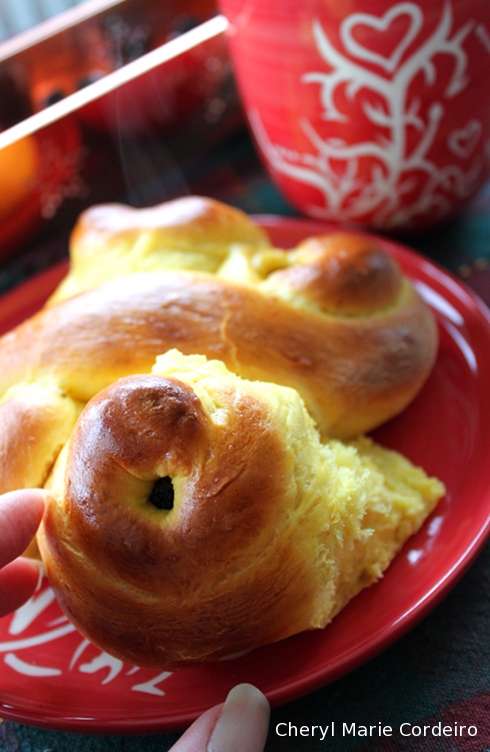
Santa Lucia saffron bread / buns or as the Swedes call them, Lussekatter.
Text and Photo © JE Nilsson and CM Cordeiro 2012
In Sweden the 13th of december is called the night of Lucia. The name is connected to the Sicilian saint of St Lucia through the Catholic past of Sweden however the actual celebration itself is that of the longest night of the year, the antipode of the Midsummer Night celebration.
In its Nordic context it was thought that this, the longest and darkest night of the year was filled with so many spirits and generally unholy workings that one had better stay awake. And to this end, till this day the night is often spent partying and in the morning, white clad girls with candles in their hair with friends visit teachers and elderly relatives. The girls with the candles in their hair signify the coming of light and the lengthening of the days again till Midsummer’s.
Today, Swedes around the world delight in celebrating Lucia on 13th December with song and dance, much like Christmas caroling in churches of the Roman Catholic faith. A beauty contest of sorts to find the year’s “Santa Lucia” queen often begins in early December across various regions of Sweden, a girl who heads the choir specifically for this celebration, crowned with a ring of lit candles on her head.
On the culinary front, a golden yellow saffron bread with the most delicate of aromas, made out in various shapes familiar to Nordic folklore is baked for this occasion, one where I find difficult to resist not in the least because of its aroma or colour, but in its lightest of texture of breads dotted with raisins.
Continue reading “Santa Lucia saffron bread, Sweden”
